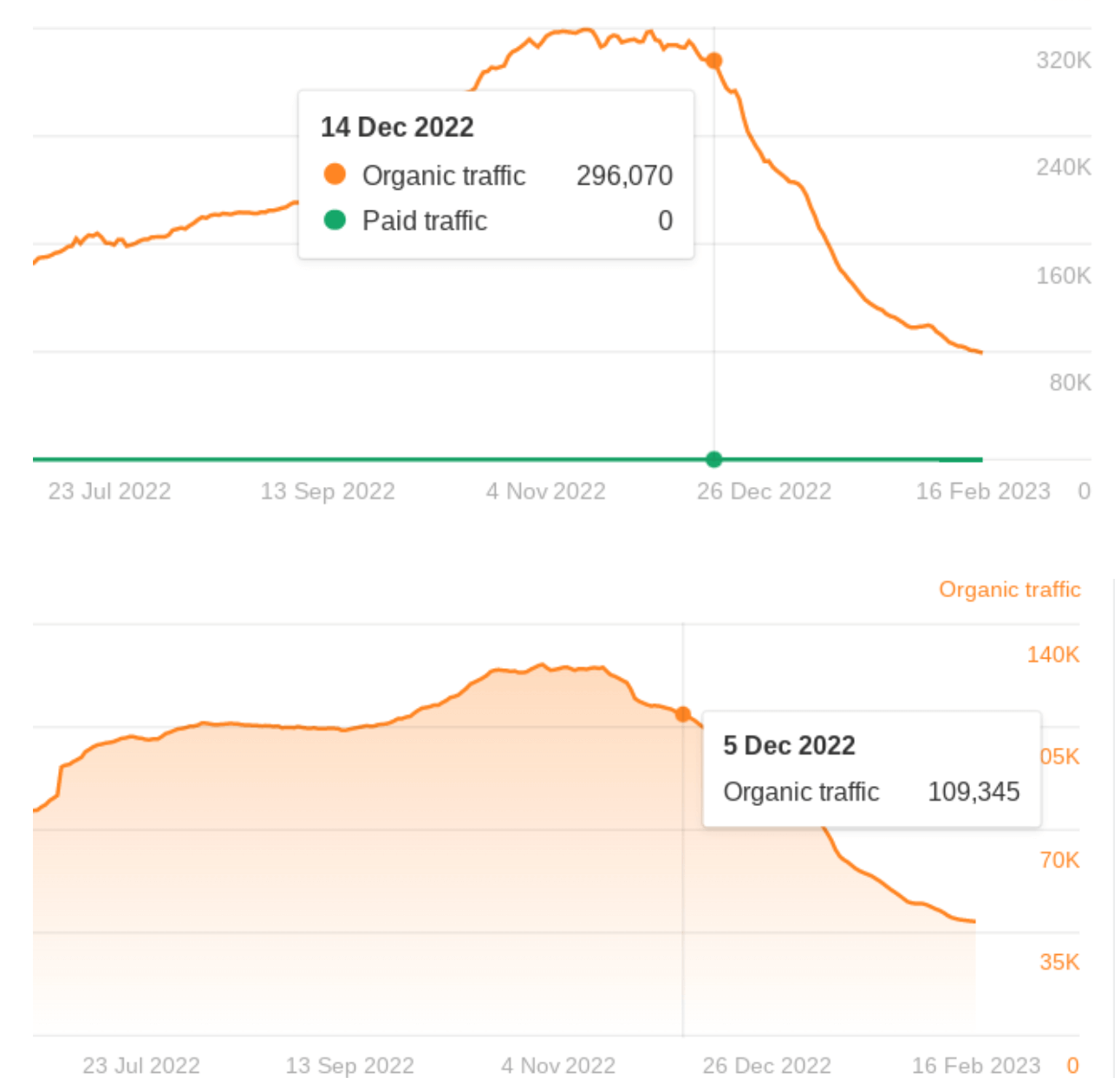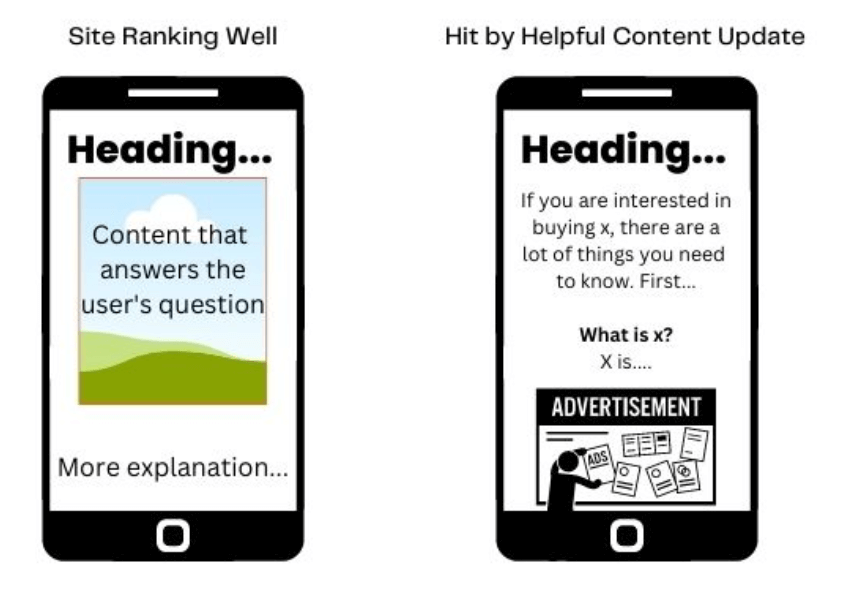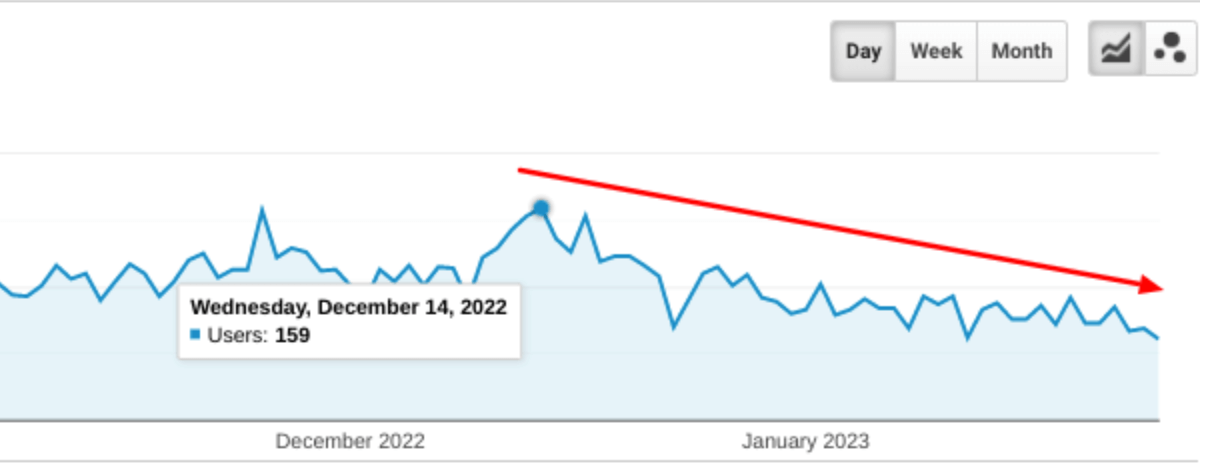I understand how frustrating it can be to experience sudden drops in your website’s traffic from Google.
Unfortunately, this is a common issue that many site owners have been facing since the beginning of 2023.
With Google’s constantly evolving algorithms, it’s vital to keep up with the latest SEO trends and updates to ensure that your site stays visible in search results.
In this article, I will cover the latest Google updates in February. I will go over the recent changes to the helpful content system, new guidance on using AI-generated content, and the upcoming release of Google Bard, an AI chat-based dialogue that could have a significant impact on search traffic.
I will discuss how the recent changes have already affected my clientele, insights that I have seen on how to adapt to these changes, and how to improve your website’s search rankings moving forward in 2023.
Many sites are reporting major losses in search traffic from google since the start of 2023. While After investigating these recent changes, I can tell you that there are a lot of sites experiencing drops. So, if your traffic has dropped off, this section will discuss what you can do to get it back.
To me, it looks like Google’s helpful content system is adapting to the recent changes online – think ChatGPT and changes in featured snippets.
If you have noticed traffic drops, these are the top things I can recommend:
Overall, it’s important to approach traffic drops with a proactive mindset. Use data and insights to identify opportunities for improvement, and be willing to adapt your strategies as needed to stay ahead of the curve.
I have been noticing this for the past few weeks. I believe this issue is related to what I mentioned about the helpful content update.
It appears Google is altering its index to ensure that only the most helpful content is shown in featured snippets.
One thing I have seen with my clients is that when we make improvements to the pages that lost their Featured Snippets, they regain them. So, if your site has lost the snippets, make sure you freshen up the content to ensure it is the most relevant and helpful for that search query.
Google recently shared some guidance on using AI for content creation. According to them, you can use whatever you want to create content, including AI, as long as the end product is of good quality and demonstrates expertise, authority, and trustworthiness (E-A-T).
Just keep in mind that Google doesn’t recommend listing AI as the author of your content.
If you keep up with SEO news, you have likely heard about Google’s plans to implement their competitor to ChatGPT.
Bard is a new AI chat-based dialogue feature that Google is adding to its search results, potentially in March 2023.
Bard will introduce a new way for people to search by interacting in a way that is similar to ChatGPT. While we don’t know much about it yet, early screenshots show Bard answering questions with detailed answers, and it may list sources below the answer.
The downside for website owners is that if users find value in Bard, this means that many websites providing users with an answer to a question will likely see losses in search traffic.
That said, we don’t know just yet whether Bard will show for all queries or just some. Google has revealed very little about what the future will hold when Bard is released, but I will keep you updated as Google releases more information on Bard.
Here is a summary of what I know about Bard:
I was initially intrigued when I saw this announcement, thinking that it might be related to link building. However, upon further inspection, it turns out that Google has actually provided us with fresh guidance on important aspects of link building that we should all be paying attention to.
Here are some key takeaways:
In the image below you will see Googles February updates for link building:
This past week, a lot of people have reached out with questions about their declining Google traffic.
In more than 15 years of SEO, I have never had this many people ask for help as I have in the last month. I have been investigating this issue for more clients, and I have many thoughts about what is happening.
It seems that many websites have seen a pattern of traffic loss that began in November, dropped with the Helpful Content Update on December 5th or December 14th, and has continued to decrease since then.
I am seeing this pattern across many different websites.
Below are some screenshots from Ahrefs that tend to show the same trajectory that I have seen in my client’s Google Analytics.

What could be causing this? I am still not able to say anything with full confidence, although I have theories as to what it could be.
Whenever I assess pages that are improving or maintaining their ranking and compare them to the pages that have struggled with recent losses, I see the issues.
Most sites that have lost rankings make the searcher work too hard to find the answer they are looking for.
Again, this relates to the helpful content system that Google adjusted in December. The helpful content system is aimed at “better rewarding content where visitors feel they’ve had a satisfying experience.”
It’s important to realize that when Google asks if your content is primarily written to attract visits from search engines, they’re not just referring to low-quality, autogenerated content.
In fact, much of the content we create is geared toward search engines rather than our actual audience.
It’s time to shift our focus and put the reader first. The content that will ultimately succeed is the one that provides the answer to the searcher’s query quickly and efficiently.
So, it’s essential to structure your content in a way that answers the user’s question upfront and makes sure it’s helpful to them.
The graphic below displays what I’m referring to.

If you’ve been affected by recent updates, it’s worth considering revising your content to ensure that the most helpful information appears at the beginning of your posts.
It’s also essential to demonstrate your expertise, authoritativeness, and trustworthiness (E-A-T) to show Google that your content is of high quality.
If you’re struggling with your traffic, I’m here to help. I’ve got plenty of resources on my website to help you learn more about SEO and improve your content.
Feel free to reach out to me for advice or for a free 15-minute SEO consultation.
Keep in mind that removing a content system classifier may take a few months, so patience is key.
In January, renowned SEO expert, Barry Shwartz discussed the increased chatted in the search community.
He stated:
I recently reviewed a site that had been seeing a steady increase over the past few months and then made a major jump beginning on the 26th of January:
 This site improved rankings for almost every query. But not all of these queries represent product review intent – i.e ‘best tools for [x], books on [y], etc.
This site improved rankings for almost every query. But not all of these queries represent product review intent – i.e ‘best tools for [x], books on [y], etc.
I am still investigating this change. I believe it will be significant as Google has told us many times in the past that when there is a product reviews update, there will be major changes to the rankings.
In another interesting case, this website I have been tracking saw a significant decrease on December 14, 2022 – the day that Google began rolling out their new link spam update.

I have noticed that the site does have a lot of unnatural links in the profile. So, I wanted to share my thoughts on what goes into Google determining whether a site has spammy or unnatural links.
Here’s how I approach checking for spammy or unnatural links on a website:
By following this process, I get a better understanding of the link profile of the site and identify any potential issues that could be impacting its rankings.
When I did this for my client, I scoured through hundreds of links on Ahrefs and only found 2 links that I considered to be natural, helpful mentions. both of which were obtained years ago.
So, what can we conclude from this?
Here are my thoughts about the issue:
I will be continuing to investigate the effects that these algorithm changes have had. I will also be diving deeper into the changes that will happen in search rankings when Bard is announced.
For more information on the latest search news, stay tuned for the March Google Update.
If your site has been hit by a recent algorithm and your traffic is dropping, book a free consultation with me and I can work with you to develop a plan moving forward.